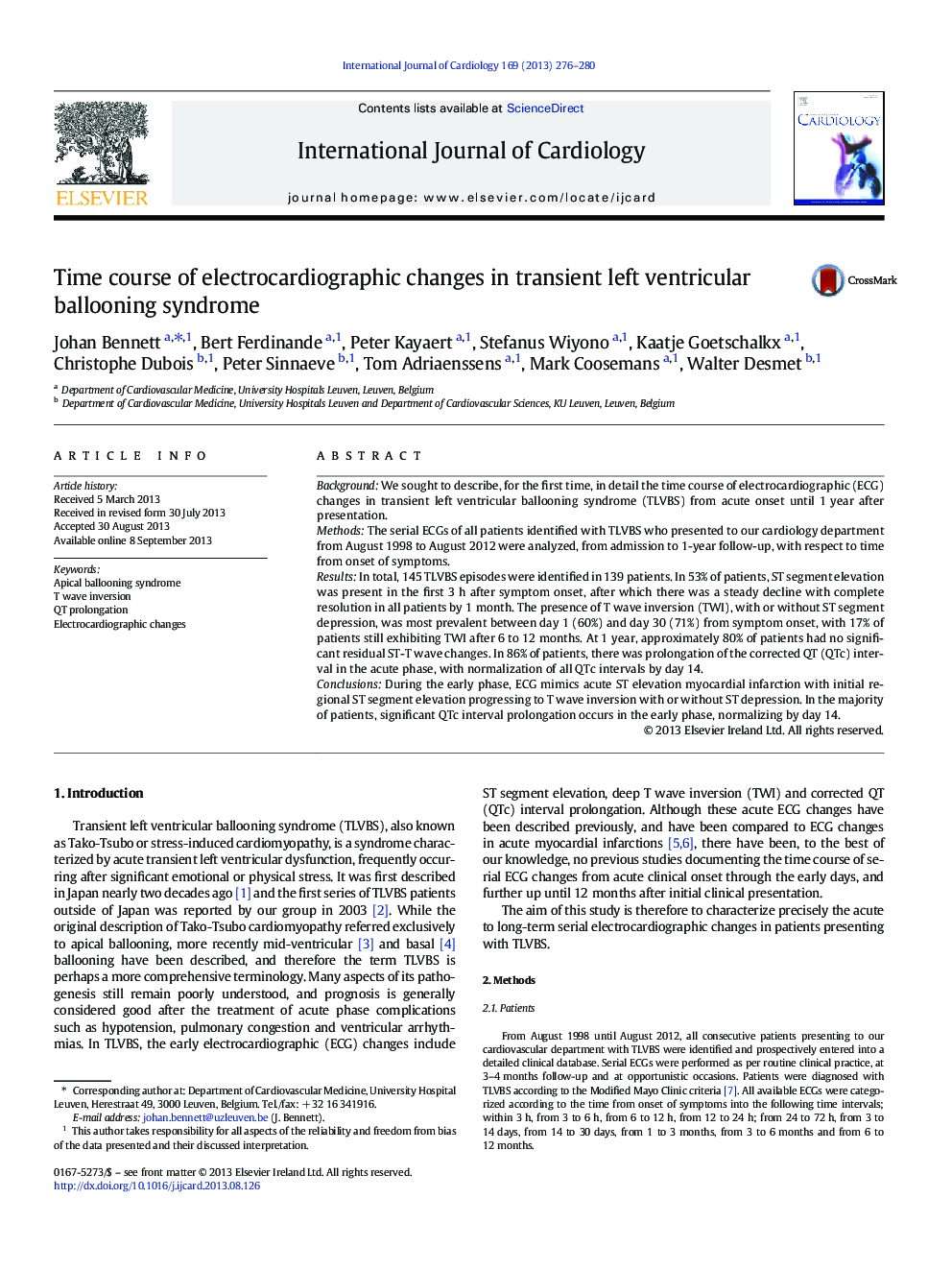| Article ID | Journal | Published Year | Pages | File Type |
|---|---|---|---|---|
| 5973989 | International Journal of Cardiology | 2013 | 5 Pages |
BackgroundWe sought to describe, for the first time, in detail the time course of electrocardiographic (ECG) changes in transient left ventricular ballooning syndrome (TLVBS) from acute onset until 1Â year after presentation.MethodsThe serial ECGs of all patients identified with TLVBS who presented to our cardiology department from August 1998 to August 2012 were analyzed, from admission to 1-year follow-up, with respect to time from onset of symptoms.ResultsIn total, 145 TLVBS episodes were identified in 139 patients. In 53% of patients, ST segment elevation was present in the first 3Â h after symptom onset, after which there was a steady decline with complete resolution in all patients by 1Â month. The presence of T wave inversion (TWI), with or without ST segment depression, was most prevalent between day 1 (60%) and day 30 (71%) from symptom onset, with 17% of patients still exhibiting TWI after 6 to 12Â months. At 1Â year, approximately 80% of patients had no significant residual ST-T wave changes. In 86% of patients, there was prolongation of the corrected QT (QTc) interval in the acute phase, with normalization of all QTc intervals by day 14.ConclusionsDuring the early phase, ECG mimics acute ST elevation myocardial infarction with initial regional ST segment elevation progressing to T wave inversion with or without ST depression. In the majority of patients, significant QTc interval prolongation occurs in the early phase, normalizing by day 14.
